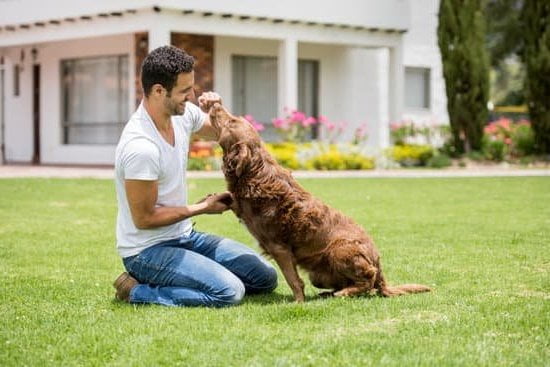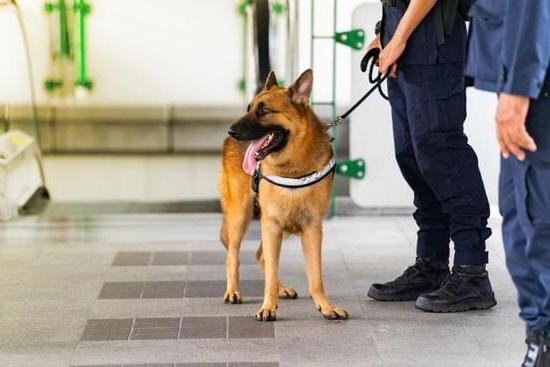Crate training is a valuable tool for dog owners that can provide numerous benefits to both the pet and their human counterparts. When done properly, crate training can be a positive experience for dogs, helping them feel secure and develop good behavior. This article will guide you through the process of training your dog for the crate, offering tips and techniques to ensure a smooth transition.
One of the primary reasons why crate training is important is that it offers a safe and comfortable space for your dog. Similar to having their own bedroom or den, crates provide dogs with a sense of security and privacy. This can be especially helpful when introducing a new puppy to your home or if you have multiple pets and need to separate them during certain times.
Moreover, crate training can assist in preventing destructive behaviors such as chewing on furniture or getting into trash. By confining your dog to their crate during times when they may be unsupervised or prone to mischief, you can protect both your belongings and your furry friend from potential harm.
Additionally, crates can be used for housebreaking purposes. Dogs naturally avoid soiling their living spaces, so by using a crate during potty training, you can help establish good bathroom habits in your canine companion.
In this article, we will delve into all aspects of crate training, including how to choose the right crate size and type for your dog’s specific needs, preparing the crate as a comfortable space with bedding and toys, and introducing your dog gradually to create positive associations. We will also address common challenges that may arise during the training process and offer tips on reinforcing the crate experience for long-term success.
By implementing these strategies, you can ensure that your dog sees their crate as a welcoming and secure retreat rather than a place of confinement.
Understanding the concept of crate training
Crate training is a common and effective method for teaching dogs to feel secure and develop good behavior. This section will delve into the concept of crate training, explaining what it entails and how it can benefit your dog.
Crate training involves using a crate as a safe and comfortable space for your dog to rest, sleep, and relax. The crate serves as a den-like environment that mimics the natural instincts of dogs, as they have an innate desire to seek out enclosed spaces for security. By providing a designated area for your dog, crate training helps establish boundaries and facilitates proper behavior.
One of the primary purposes of crate training is to prevent destructive behavior when you cannot directly supervise your furry friend. Dogs are prone to chewing furniture, household items, or even themselves when left unsupervised. By keeping them in a crate during these times, you create a safe environment where they are less likely to engage in destructive behavior.
Additionally, crate training can aid in housebreaking your dog. Dogs generally do not like eliminating in their sleeping area, so if properly trained, they will learn to hold their bladder until it’s time for a designated bathroom break outside.
Furthermore, crates provide dogs with a sense of security and serve as their own personal space where they can retreat when feeling anxious or overwhelmed. This provides them with a calming effect during stressful situations such as thunderstorms or when visitors come over.
Understanding the benefits of crate training can help alleviate any concerns or reservations you may have about implementing this technique with your dog. By providing them with their own den-like space and establishing boundaries, you promote good behavior while ensuring their emotional well-being.
| Benefits of Crate Training |
|---|
| Prevents destructive behavior |
| Aids in housebreaking |
| Provides a sense of security |
| Promotes good behavior and emotional well-being |
Choosing the right crate for your dog
When it comes to crate training your dog, choosing the right crate is essential for a successful training experience. The size and type of crate you choose should be based on your dog’s breed and personality. This section will provide tips to help you select the appropriate crate for your furry friend.
Firstly, consider the size of your dog when selecting a crate. It is important that your dog has enough space to stand up, turn around, and lie down comfortably. If the crate is too small, it can feel cramped and uncomfortable for your dog. On the other hand, if the crate is too large, it may not provide the sense of security that dogs typically seek in their den-like spaces.
For accurate sizing, measure your dog from the tip of their nose to the base of their tail and add a few inches for extra space. Additionally, measure your dog’s height from the floor to the top of their head or ears when they are standing. These measurements will help you determine the appropriate dimensions for your dog’s crate.
Next, consider the type of crate that would best suit your dog’s needs. There are different types of crates available such as wire crates, plastic crates, soft-sided crates, and wooden crates. Wire crates are popular because they provide good visibility and ventilation while also being collapsible for easy storage or transport. Plastic crates offer more privacy and can create a cozy den-like environment for dogs who prefer seclusion.
Soft-sided crates are lightweight and portable options that work well for travel or short periods of confinement. Wooden crates, often used as furniture pieces, can blend seamlessly into your home decor while providing a secure space for your dog.
| Tips for choosing the right crate: |
|---|
| Consider your dog’s size and ensure they have enough space to stand, turn around, and lie down comfortably. |
| Measure your dog’s dimensions from nose to tail and height to determine the appropriate crate size. |
| Choose a type of crate that suits your dog’s needs, such as wire crates for good visibility or plastic crates for added privacy. |
Preparing the crate for training
Preparing the crate for training is an essential step in crate training your dog. Creating a comfortable and inviting space will help your dog feel secure and develop a positive association with the crate. Here is a step-by-step guide on how to prepare the crate for training:
- Choose the right size crate: It is important to select a crate that is appropriate for your dog’s size. Your dog should have enough room to stand, turn around, and lie down comfortably. If the crate is too big, your dog may not feel safe or secure. Conversely, if it is too small, your dog may feel cramped and uncomfortable.
- Add bedding: Place soft bedding inside the crate to make it more comfortable for your dog. Opt for materials that are cozy and easy to clean, such as blankets or towels. Avoid using bedding that can be easily destroyed or ingested by your dog, as this can pose a safety hazard.
- Provide toys and chews: To keep your dog entertained and prevent boredom while in the crate, provide them with appropriate toys and chew items. The toys should be durable and safe for your dog to play with unsupervised. Interactive toys, such as puzzle feeders or treat-dispensing toys, can also help keep your dog mentally stimulated while in the crate.
- Use treats strategically: Placing treats inside the crate can help create a positive association with it. Start by placing treats near the entrance of the crate to encourage your dog to investigate and enter willingly. Gradually move the treats farther into the back of the crate until your dog feels comfortable going all the way inside.
- Make it a rewarding space: Associate positive experiences with being in the crate by providing treats or praise whenever your dog voluntarily enters or stays in the crate without exhibiting signs of stress or anxiety.
- Use calming scents: Dogs often find comfort in familiar scents, so consider placing an item with your scent, such as a worn t-shirt, inside the crate. You can also use calming pheromone sprays or diffusers to help create a relaxed environment.
By following these steps and creating a comfortable and inviting space in the crate, you can help set your dog up for success during crate training.
Introducing your dog to the crate
Introducing your dog to the crate is an essential step in crate training. This process involves gradually familiarizing your dog with the crate and creating positive associations, ultimately making it a comfortable and inviting space for them. By using several techniques, you can ensure that your dog views the crate as a safe haven rather than a source of anxiety or confinement.
One effective way to introduce your dog to the crate is by using mealtime. Begin by placing their food bowl near the crate, gradually moving it closer over time until they are comfortable eating right next to it.
Once they are consistently eating near the crate without hesitation, start placing their bowl just inside the entrance so that they have to step inside to eat. Gradually move the bowl deeper into the crate until they are comfortably eating all their meals inside.
Another technique is to use crate games to make the crate a fun place for your dog. Start by tossing treats or toys near the entrance of the crate and rewarding them when they approach or investigate it. As your dog becomes more comfortable, toss treats further into the back of the crate, encouraging them to go inside. You can also hide treats or toys inside for them to find during playtime, making it an engaging experience.
It’s important not to rush this process, as every dog will have their own pace when getting acquainted with their new space. Patience and positive reinforcement are key throughout these introductory steps.
Remember to praise and reward your dog each time they voluntarily enter or interact with the crate, reinforcing positive associations. By utilizing these techniques, you can help ensure that your dog feels secure and comfortable in their crate, setting them up for success in future training sessions and ultimately creating a harmonious living environment for both you and your furry friend.
Basic crate training commands
Teaching your dog basic crate training commands is essential for a smooth and stress-free transition into the crate. By using commands like “crate” and “wait,” you can establish clear communication with your dog and help them understand what is expected of them during crate training. Here are some steps to effectively teach these important commands.
To start, choose a specific word or phrase that you will use consistently as the command for entering the crate, such as “crate” or “kennel up.” Begin by saying the command in an enthusiastic tone while pointing towards the crate. You can also use a treat to lure your dog into the crate initially. Once they enter the crate, praise them and give them a reward.
Repeat this process several times until your dog starts to understand that the command is associated with going into the crate. Gradually remove the treat lure, but continue to reward your dog every time they willingly enter the crate after hearing the command.
The “wait” command is equally important for creating a calm and controlled environment during crate training. This command teaches your dog to patiently wait inside their crate without immediately rushing out when the door opens. Start by opening the crate door slightly and saying “wait.” If your dog stays inside without attempting to come out, praise them and give them a reward. If they try to exit, gently close the door without scolding or punishing them.
Slowly increase the duration of waiting time before giving your dog permission to come out of the crate. Practice this command frequently throughout each training session, gradually working up to longer periods of waiting time. It’s important to be patient and consistent in reinforcing these commands so that your dog understands what behavior is expected from them.
By teaching your dog these basic commands like “crate” and “wait,” you are setting a solid foundation for successful and positive crate training experiences. These commands will not only assist with creating structure and discipline during training but will also help your dog feel more comfortable and secure in their crate. Remember to always reward your dog for their good behavior and be patient while they learn these commands, as every dog learns at their own pace.
Addressing common crate training challenges
Separation anxiety
One of the most common challenges when crate training a dog is separation anxiety. This occurs when dogs become distressed or anxious when left alone in their crates. Dogs with separation anxiety may exhibit behaviors such as excessive barking, whining, scratching at the crate door, and even destructive chewing.
To address separation anxiety during crate training, it’s important to gradually desensitize your dog to being alone in the crate. Start by leaving your dog in the crate for short periods of time and gradually increase the duration as they become more comfortable.
You can also help ease their anxiety by providing soothing background noise, such as calming music or a white noise machine. Additionally, consider using anti-anxiety tools like pheromone diffusers or calming supplements recommended by your veterinarian.
Excessive barking
Some dogs may develop a habit of excessive barking when confined to a crate because they are seeking attention or expressing frustration. To curb this behavior, it’s important to teach your dog that quiet behavior is rewarded.
Start by ignoring the barking and only reward your dog with attention or treats when they are calm and quiet. It’s essential not to give in to their demands by letting them out of the crate while they are barking. Instead, wait for a moment of silence before opening the door.
If your dog continues to bark persistently, you can try distracting them with puzzle toys or interactive feeders inside the crate. These toys will keep them mentally stimulated and occupied, reducing their desire to bark out of boredom.
Resistance to entering the crate
Some dogs may initially resist entering the crate due to fear or negative associations. To overcome this challenge, it’s important to make the crate a positive and inviting space for your furry friend.
You can start by placing treats near the entrance of the crate and gradually moving them further inside over time. Encourage your dog to enter the crate by using a command like “crate” and rewarding them with treats and praise when they comply. It may also help to feed your dog their regular meals inside the crate, associating it with positive experiences.
Avoid forcing your dog into the crate or using punishment as this can create further resistance and fear. Patience and consistency are key in addressing this challenge, as it may take time for your dog to feel comfortable entering the crate willingly.
Gradually increasing crate time
Gradually increasing crate time is an essential step in crate training your dog. By gradually extending the duration your dog spends in the crate, you can help them become more comfortable and confident in their new space. Additionally, implementing a consistent schedule for crate time promotes reliability and reduces anxiety for your dog.
Step 1: Start Slow
When beginning to increase crate time, it is important to start slow and gradually work your way up. Begin by closing the crate door for just a few minutes while you are still in the room with your dog. This allows your dog to get accustomed to being confined without feeling abandoned or anxious.
Step 2: Use Positive Reinforcement
During this stage, it is important to use positive reinforcement to reward your dog for calm behavior inside the crate. Provide treats, praise, or a special toy when they are relaxed and quiet. This helps them associate being in the crate with positive experiences and reinforces good behavior.
Step 3: Increase Duration Gradually
Once your dog is comfortable with short periods in the crate, gradually increase the duration of their time inside. Add a few minutes each day or every other day, depending on how quickly your dog adapts. Remember to always monitor their behavior and make adjustments accordingly.
Step 4: Stick to a Consistent Schedule
Creating a consistent schedule for crate time is crucial for promoting reliability and reducing anxiety. Dogs thrive on routine and knowing what to expect helps them feel secure. Establish specific times for meals, potty breaks, exercise, and relaxation inside the crate. This routine will help your dog understand that crate time is a regular part of their daily life.
By following these steps and gradually increasing crate time, you can help your dog feel at ease within their crate while also fostering good behavior and reliability. Remember that patience and consistency are key during this process, and always provide positive reinforcement to create a positive association with the crate.
Reinforcing crate training
Creating a positive and comfortable experience for your dog in the crate is essential to successful crate training. Reinforcement of crate training can be achieved through various techniques such as occasional treats, praise, and regular exercise to prevent boredom.
One way to reinforce crate training is by occasionally providing treats inside the crate. This helps create a positive association with the crate and motivates your dog to voluntarily enter their designated space. It is important to choose appropriate treats that are both enticing and safe for your dog. By rewarding them with treats inside the crate, you are reinforcing good behavior and creating a positive experience.
In addition to treats, offering praise can also be an effective method of reinforcement. When your dog willingly enters or spends time in the crate, offer verbal encouragement and affectionate praise. This helps build their confidence and makes them more likely to view the crate as a safe and comforting space. Remember to use a cheerful tone of voice and show genuine enthusiasm towards their actions.
Regular exercise is another crucial aspect of maintaining a positive crate experience for your dog. Ensuring they receive ample physical activity outside of the crate helps prevent boredom, restlessness, and even anxiety while they are confined. Engage in daily walks, play sessions, or other forms of exercise that suit your dog’s breed and energy level. A tired dog is more likely to relax comfortably in the crate rather than exhibit restless behaviors.
By reinforcing crate training with occasional treats, praise, and regular exercise, you can create a positive association with the crate for your dog. These methods help maintain their comfort and satisfaction in their confinement area, reducing stress or negative associations that may hinder successful training. Consistency in reinforcement will ultimately lead to a well-adjusted canine who views their crate as a safe haven rather than a source of anxiety or confinement.
Gradual freedom and transitioning out of the crate
Transitioning out of the crate is a significant milestone in your dog’s training journey. It signifies that they have developed the necessary skills and behavior to confidently enjoy increased freedom in their environment. However, it is crucial to approach this transition gradually and thoughtfully to ensure a smooth and successful adjustment.
To begin the process of transitioning out of the crate, start by allowing your dog short periods of supervised freedom in a designated area of your home. This area should be safe and free from any potential hazards or temptations for your dog to get into trouble. Keep a close eye on them during these initial moments to assess their behavior and ensure they are comfortable.
As your dog becomes more accustomed to supervised freedom, gradually expand their access to other parts of your home. Increase their allotted time outside the crate incrementally, giving them ample opportunities to demonstrate good behavior and self-control. Remember to always praise and reward them for appropriate behavior as positive reinforcement will reinforce their understanding of what is expected.
In addition to gradually increasing freedom, provide alternative ways for your dog to spend their energy and mental stimulation outside of the crate. Engaging in regular exercise, playtime, and training sessions will help prevent boredom and keep them mentally and physically stimulated throughout the day.
During this transition period, it is important not to rush the process or leave your dog unsupervised for extended periods until you are confident in their ability to handle increased freedom responsibly. Each dog will progress at their own pace, so be patient and adjust the timeline accordingly.
Finally, when you feel confident that your dog has successfully transitioned out of the crate, consider formally eliminating its presence from your home altogether. Removing the crate can help solidify that increased freedom without any reliance on confinement. However, keep in mind that some dogs may still benefit from having access to a safe space such as a designated bedroom or quiet corner where they can retreat if needed.
By following these gradual strategies for transitioning out of the crate, you can create a positive and successful experience for both you and your dog. Remember to always prioritize their safety, reinforce good behavior, and be patient throughout the process. With time and consistency, your dog will develop the confidence and skills they need to thrive in a crate-free environment.
Frequently Asked Questions
How do I train my dog to use a crate?
Training a dog to use a crate requires patience and consistency. Start by introducing your dog to the crate in a positive way, allowing them to explore it at their own pace. Make the crate a comfortable and inviting space by adding bedding or a blanket inside. Gradually encourage your dog to spend more time in the crate by tossing treats or feeding them meals inside it.
Use positive reinforcement techniques such as praise, treats, or toys whenever your dog voluntarily goes into the crate. Avoid forcing your dog into the crate as this can create negative associations. Slowly increase the duration of time spent in the crate, always ensuring it remains a positive experience for your dog.
How long does it take a dog to get used to a crate?
The time it takes for a dog to get used to a crate can vary depending on factors such as their individual temperament and previous experiences with crates. Some dogs may take only a few days while others may require several weeks of consistent training and acclimation. It is essential to be patient and not rush the process.
Remember that every dog is unique, and they need time to adjust at their own pace. Pay attention to your dog’s behavior and body language throughout the process, making sure they remain calm and comfortable in the crate.
How do I get my dog to stop crying in his crate?
If your dog is crying in their crate, it is vital to determine the underlying cause before addressing this behavior specifically. Dogs may cry in their crates due to separation anxiety, discomfort, fear, or even just seeking attention. To address this issue effectively:

Welcome to the blog! I am a professional dog trainer and have been working with dogs for many years. In this blog, I will be discussing various topics related to dog training, including tips, tricks, and advice. I hope you find this information helpful and informative. Thanks for reading!





